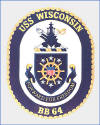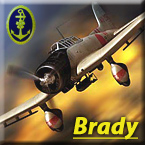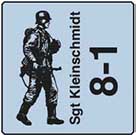mdiehl
Posts: 5998
Joined: 10/21/2000
Status: offline

|
quote:
Again, everything you said was incorrect.
Again, you are incorrect. But don't take my word for it, the sources, some of which (there are many) I have cited, are available to all.
quote:
I agree that enegry, "Boom and Zoom" is very valuable. Until you run into someone who can stay with you in speed, climb, dive and acceleration. Then what do you do?
We agree that boom and zoom does not favor one plane if the planes have the same flight profiles and characteristics.
quote:
Again, you are incorrect on the speed of the Ki-84-1.
Again, you are incorrect. Again, don't take my word for it, consult any of the dozens of sources that document the history of the Ki-84. You've got ONE source, I suppose, but you have not cited it, that attributes a higher speed on the basis of a claim of better flight tests of what, one or two engineers? Absent original documents, their assertions aren't worth my time.
quote:
Are you suggesting that the heavier, wooden version flew faster?
The rest that preceeds that sentence is not credible. That sentence is clearly not what I wrote. 'nuff said.
quote:
And as a pilot i can also say you are completely incorrect on octane. My brother owns a Cessna 172 rated for 103 octane. We tried to get it to run on 87 octane aviation fuel. Didn't work.
Again, you seem not to grasp the distinction between using a lower octane fuel in an engine rated for higher octane, and using a higher octane fuel in an engine rated for lower octane. Your snowblower, lawnmower, or dirt bike will run just fine on 100 octane. although you will probably waste some fuel. Of COURSE your Cessna 172 will not run fine on 87 octane. The difference is that 100 octane will NOT cause knock in an engine rated for 87 octane. 87 octane WILL, however, cause knock in an engine rated for much higher octane fuel. Try it out fellow. I don't know what sort of vehicle you drive. If you are like most motorists your car is designed for 87 octane. Put some 100 in there and see what difference it makes. Or, for that matter, read the durned operating manual. Most of them say that "100 octane will not deteriorate the performance of your car but it is unnecessary" or words to that effect.
quote:
And no, the engine on the Ki-84 was not all that high of pressure. All 100 octane fuel does for you is to allow you to have higher compression rates.
That is a wierd comment. What do you think "compression" entails? It's all about pressure. At high compression, a low-octane fuel will have a greater chance of premature combustion than a high octane fuel. As a pilot you ought to know this. It is incredible that you seem not to know this.
quote:
And on the maneuverability, are you just being deliberately obtuse? The Ki-84 pilot would not try to turn at high speed! That is what god created maneuvering flaps for; slow down, turn, then blow the plane with the larger turning radius out of the sky.
That is a very strange comment. If you slow down you lose. If you deploy your flaps at 300 mph you are likely to rip the darned things off of your plane. Dive brakes would be better for the job. But the basic problem here is that if you are back in the original problem (presuming an Ki-84 to be approaching a P-51 from behind at high speed), if you SLOW DOWN the Ki-84 the P-51 simply walks away. The P-51 does not then slow down to match your speed. He flies away and comes at you at high speed and makes your now-slow-moving-and-largely-a-sitting-duck aircraft into a disarticulated mass of burning wreckage. The lesson was learned THOUSANDS of times that the faster plane tends to win.
quote:
I give you a real example of speed NOT winning a dogfight and you throw me 'Zeroes are a prime example of speed winning' Duh!
I think you are confused. Zeroes are a prime example of a slow, highly maneuverable plane losing. The P-40's preferred tactic against the A6M-2 was to use the P-40s superior speed and high-speed maneuverability to gain positional advantage over the A6M and destroy it. It also worked in P-40s vs the more maneuverable but slower Ki-43 and the Nate.
quote:
Gee, the zeroes in late '42 on were only outnumbered horrendously, unarmoured and full of very incendiary fuel!
Uh, actually, the Zeros in 1942 in most circumstances outnumbered their opponents. It was in large measure why they were so successful through March 1942 -- that and the tendency that has been alleged (and I believe the allegations) that the P-40 drivers in the Indonesia/New Guinea areas were willing to allow their airspeeds to drop to the point at which the Zero became a better (faster accelerating and more maneuverable) aircraft.
quote:
The RAF Buffalo had the heaviest load of any Buffalo used in combat at 2950Kg while, for example, the Finnish Buffaloes weighed in at 2640Kg. That makes it a bad test. Lets see a slow, non maneuverable aircraft vs. a fast non maneuverable aircraft.... which will win? That is how you demonstrate what you want to see, not learn anything.
First of all, the F2 was more maneuverable in general than the P-40 but not as fast. The problem with most of the Japanese vs Allied fighter comparisons is that for much of the war the Allies simply weren't willing to fight at speeds in which the Japanese a/c could be more maneuverable. Thus, while the A6M2 is the best plane to be in if you can count on the combat occurring at speeds in general less than 300 mph, it's worse when the speed is above 300 mph. You're pretty much always going to be in a situation, flying a Japanese aircraft, when ias is above 350 mph, that regardless of the Japanese fighter in question, its allied foe is going to be both capable of faster max ias and also be more maneuverable. The only notable exceptions are allied twin-engined designs (the P38, P-61) and the F6F.
quote:
America was, and is, obsessed with speed. There is nothing wrong with that, it is probably the most important element in aircraft design in WW2 but it is not the only
It is the single most important and decisive factor, other than adequate levels of training (in effect the pilot is trained to keep his airspeed high and not lose energy maneuvering) in determining the outcome of GUN combat, because the faster a/c ALWAYS has the ability to control the fight (and, therefore, gain positional advantage). In modern designs we have, now, the complicating factor that most air-to-air missiles are capable of outrunning most aircraft, so the speed advantage has been somewhat neutered by technology. Here, maneuverability is desirable because, at least for the moment, a highly maneuverable aircraft can fox a missile by turning. If, however, someone comes up with a reliable missile defense that does not require turning (high energy lasers are recently in the news), then speed will again be the dominating criterion.
_____________________________
Show me a fellow who rejects statistical analysis a priori and I'll show you a fellow who has no knowledge of statistics.
Didn't we have this conversation already?
|
 Printable Version
Printable Version
















 New Messages
New Messages No New Messages
No New Messages Hot Topic w/ New Messages
Hot Topic w/ New Messages Hot Topic w/o New Messages
Hot Topic w/o New Messages Locked w/ New Messages
Locked w/ New Messages Locked w/o New Messages
Locked w/o New Messages Post New Thread
Post New Thread